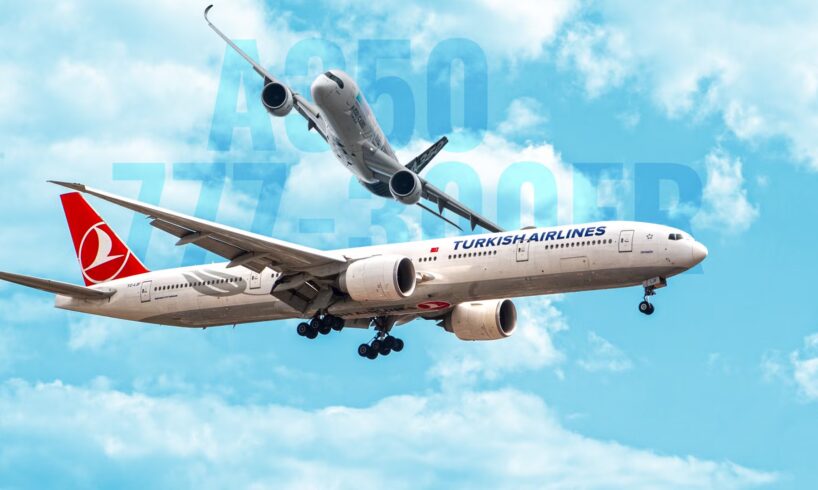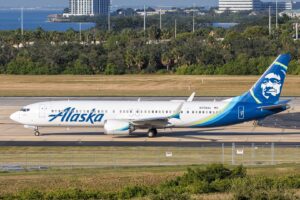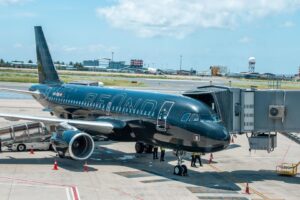
For over two decades, the Boeing 777-300ER has been a symbol of range, reliability, and raw performance in the long-haul aviation world. Designed as the extended-range variant of the original Boeing 777-300, it quickly became a cornerstone of international fleets, connecting major global hubs with unmatched endurance and capacity. While the aviation industry now welcomes newer aircraft, such as the Airbus A350, the 777-300ER continues to hold its ground as one of the most capable and profitable twin-engine jets ever built.
The A350 may represent a new generation of lightweight composite design and fuel economy. Still, the 777-300ER’s combination of proven engineering, operational flexibility, widespread fleet integration, and passenger appeal makes it a continuing favorite among airlines and travelers alike. From its spacious cabin and record-breaking engines to its impressive payload and global service network, the 777-300ER stands as a testament to Boeing’s mastery of widebody design, one that still defines the standard for long-range air travel.
Spacious Comfort And Passenger Appeal
Credit: Emirates
One of the most defining advantages of the Boeing 777-300ER over the Airbus A350 lies in its cabin design and level of passenger comfort it offers. Boeing’s Signature Interior emphasizes space, light, and convenience, with a cabin that is both wider and roomier than its Airbus rival. This width allows airlines to configure the aircraft in either a spacious 9-abreast layout or a higher-capacity 10-abreast configuration while maintaining competitive seat comfort. The result is a cabin that feels open and generous, even on long-haul flights.
Passengers immediately notice the 777’s larger windows, which are approximately 12% bigger than those on the A350. Combined with high ceilings and sleek overhead bins, the interior creates a sense of airiness uncommon in high-density aircraft. These overhead compartments are also designed for easy access and storage. It’s a subtle but meaningful design choice that makes a difference during boarding and in-flight movement.
This balance of comfort and practicality has made the 777-300ER a preferred choice for airlines looking to deliver a premium passenger experience. Whether in first class, business, or economy, the cabin’s design supports both luxury and efficiency, proving that comfort doesn’t have to come at the cost of operational advantage.
Higher Passenger And Cargo Capacity
Credit: Shutterstock
Airlines prize the 777-300ER for its remarkable seating and cargo capacity, which consistently outperforms the A350 in total payload capability. Typically, the 777-300ER accommodates between 365 and 396 passengers, compared to the A350-900’s 300–350 range. The difference may seem marginal at first glance, but over multiple long-haul rotations, the additional seats can translate into millions of dollars in extra annual revenue for major carriers.
Beyond passenger numbers, the 777’s belly cargo space is among the most generous of any passenger jet. Its design allows airlines to carry significant freight volumes without compromising passenger load, a crucial advantage on international routes where cargo plays a major role in profitability. Even as fuel prices and freight markets fluctuate, the 777-300ER’s high payload-to-range ratio ensures it remains one of the most versatile workhorses in global aviation.
Aircraft
Typical Passenger Capacity (2 Class Configuration)
Cargo / Hold Capacity (IAG)
Notes
Boeing 777-300ER
396 (Boeing)
25.2 tonnes (55,555 lbs)
4 AKE + 9 PAG ULDs
Airbus A350-900
334 (Fiji Airways)
395 for A350-1000 (Qatar Airways)
17 tonnes (37,470 lbs)
2 AKE + 8 PAG ULDs
This blend of capacity and flexibility makes the 777 particularly valuable on dense, high-demand routes such as Dubai–New York or London–Singapore. While the A350 offers improved fuel efficiency, the 777’s ability to carry more passengers and freight continues to deliver superior overall revenue performance, a metric airlines weigh heavily in fleet planning decisions.
Unmatched Range And Engine Performance
Credit: Shutterstock
At the heart of the 777-300ER’s performance are its General Electric GE90-115B engines, the most powerful commercial jet engines ever built. Each produces up to 115,000 pounds of thrust, providing exceptional performance under heavy loads and during long-distance operations. This power enables the 777-300ER to maintain impressive takeoff performance from high-altitude or hot-weather airports, where engine output is often challenged.
The aircraft’s range of approximately 7,370 nautical miles (13,650 km) gives airlines the flexibility to operate nonstop routes that were once only possible with four-engine jets. Whether connecting Europe to Asia or North America to the Middle East, the 777-300ER delivers long-haul capability with remarkable consistency. The A350 series offers a similar range, but its performance advantage narrows under high-payload conditions, a situation where the 777’s power and durability shine.
GE90-115B
Value (MTU Aero Engines)
Max. thrust
115,000 lbf
Bypass ratio
9:1
Pressure ratio
42:1
Length
29.9 feet. (9.1 meters)
Fan diameter
10.5 feet (3.2 meters)
Dry weight
18,260 lbs (8,282 kg)
Equally important is the proven reliability of the GE90 engines, which have logged millions of flight hours with outstanding dispatch reliability. Airlines value this consistency, as fewer technical issues mean less downtime, fewer cancellations, and lower maintenance costs. The combination of thrust, endurance, and reliability makes the 777-300ER a trusted performer that consistently meets the demanding expectations of international operators.
Proven Reliability And Global Support
Credit: Shutterstock
In aviation, reliability is everything, and the Boeing 777-300ER has built a reputation as one of the most dependable aircraft ever produced. Since entering service in 2004, it has achieved exceptional operational reliability rates, with more than 99% dispatch consistency across global fleets. This record is the result of Boeing’s rigorous testing, durable engineering, and constant refinement of systems and components.
More than 800 777-300ERs have been delivered to airlines around the world, forming one of the largest and most established widebody fleets in existence. This extensive presence ensures a well-developed global maintenance and support network, with spare parts, trained technicians, and maintenance facilities available at major hubs worldwide. For airlines, this translates to reduced turnaround times and simplified logistics when compared to newer aircraft models like the A350, which are still building global support infrastructure.
Moreover, the 777-300ER’s longevity and established supply chain mean that operators benefit from lower maintenance and training costs. Pilots transitioning from earlier 777 variants face minimal retraining, while mechanics are already deeply familiar with the aircraft’s systems. This combination of reliability, familiarity, and support remains a major factor in why many airlines continue to order and operate the 777-300ER, even alongside newer aircraft types.
Versatility For The World’s Leading Airlines
Credit: Wikimedia Commons
The 777-300ER’s adaptability has made it a flagship aircraft for some of the world’s most prestigious airlines. Carriers such as Emirates, Qatar Airways, and Singapore Airlines have built their reputations around the aircraft, deploying it on high-traffic long-haul routes where range, comfort, and reliability are essential. Its ability to handle both premium and high-density configurations allows each airline to tailor the aircraft to its unique market needs.
For operators transitioning away from older four-engine aircraft like the Boeing 747 or Airbus A340, the 777-300ER provides a perfect balance of capacity and efficiency. It delivers comparable passenger numbers at significantly lower operating costs, thanks to its twin-engine design and optimized aerodynamics. This makes it ideal for maintaining long-haul capacity without the excess fuel consumption of legacy jumbo jets.
Additionally, the 777-300ER’s proven performance record continues to strengthen its market value, both as a passenger aircraft and as a platform for freighter conversion. As the global aviation industry evolves, the 777’s enduring versatility ensures it remains an essential part of modern fleets, not just as a reliable performer, but as an aircraft that consistently adapts to changing airline strategies and market conditions.
A Proven Icon of Long-Haul Aviation
Credit: Simple Flying
While the Airbus A350 represents a new generation of composite efficiency, the Boeing 777-300ER remains unmatched in its blend of capacity, reliability, and sheer capability. It offers airlines a proven platform with vast seating flexibility, generous cargo space, and unmatched global support, qualities that continue to deliver strong returns on investment nearly two decades after its debut.
For passengers, the 777-300ER’s spacious cabin, large windows, and quiet ride make it a consistent favorite on long-haul journeys. It strikes a balance between comfort and performance in a way that few modern aircraft can replicate, maintaining a legacy of excellence that transcends its age.
Ultimately, the 777-300ER stands as a symbol of a balance between innovation and dependability, an aircraft that not only reshaped long-haul travel but continues to define it. Boeing is looking to cement the success of the 777-300ER and yet again set the bar for future long haul, with the highly anticipated and significantly delayed Boeing 777X, whose success remains to be seen. Whatever the future holds for Boeing and the 777X, the enduring achievements of the 777-300ER serve as proof that great design, proven performance, and operational reliability never go out of style.






